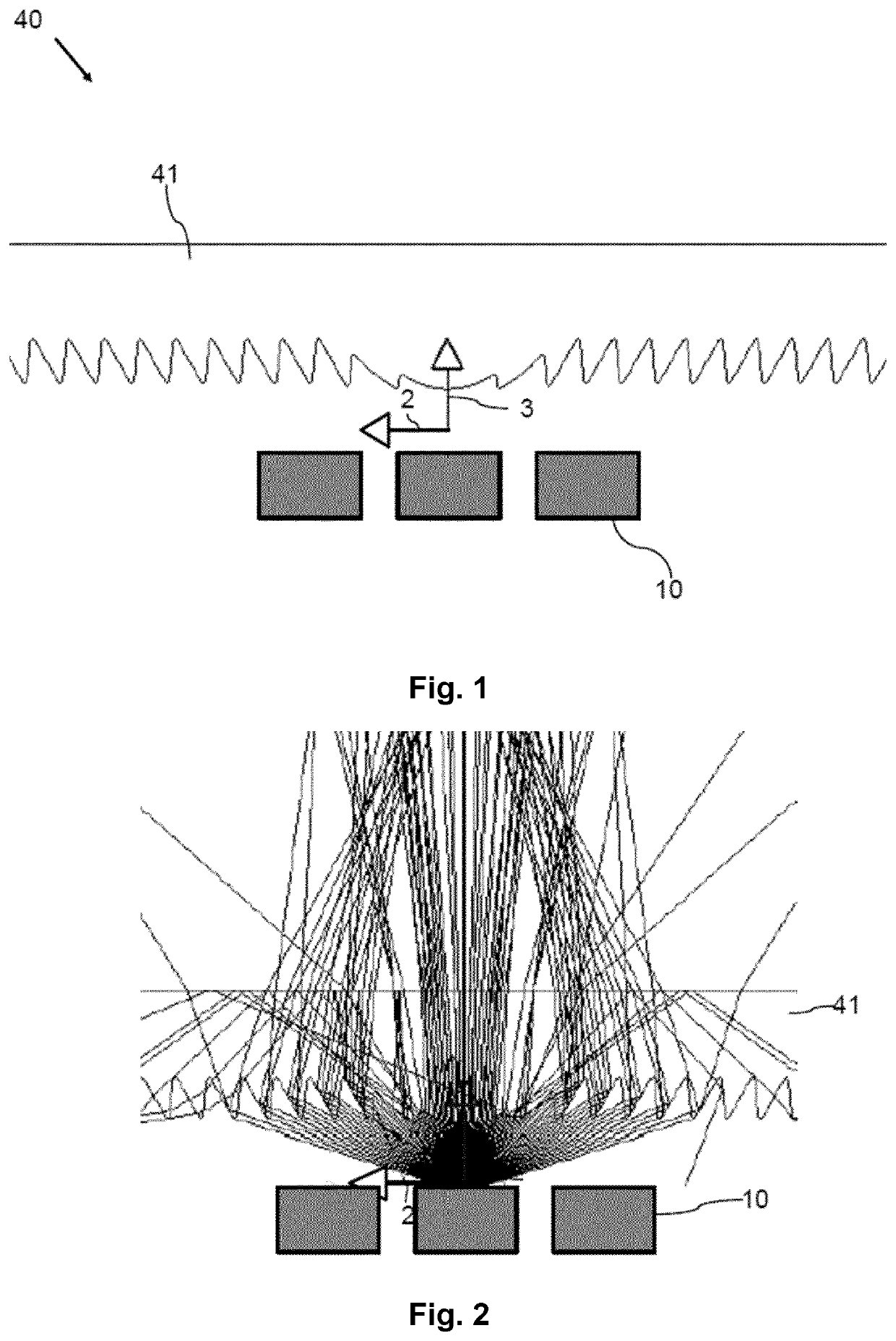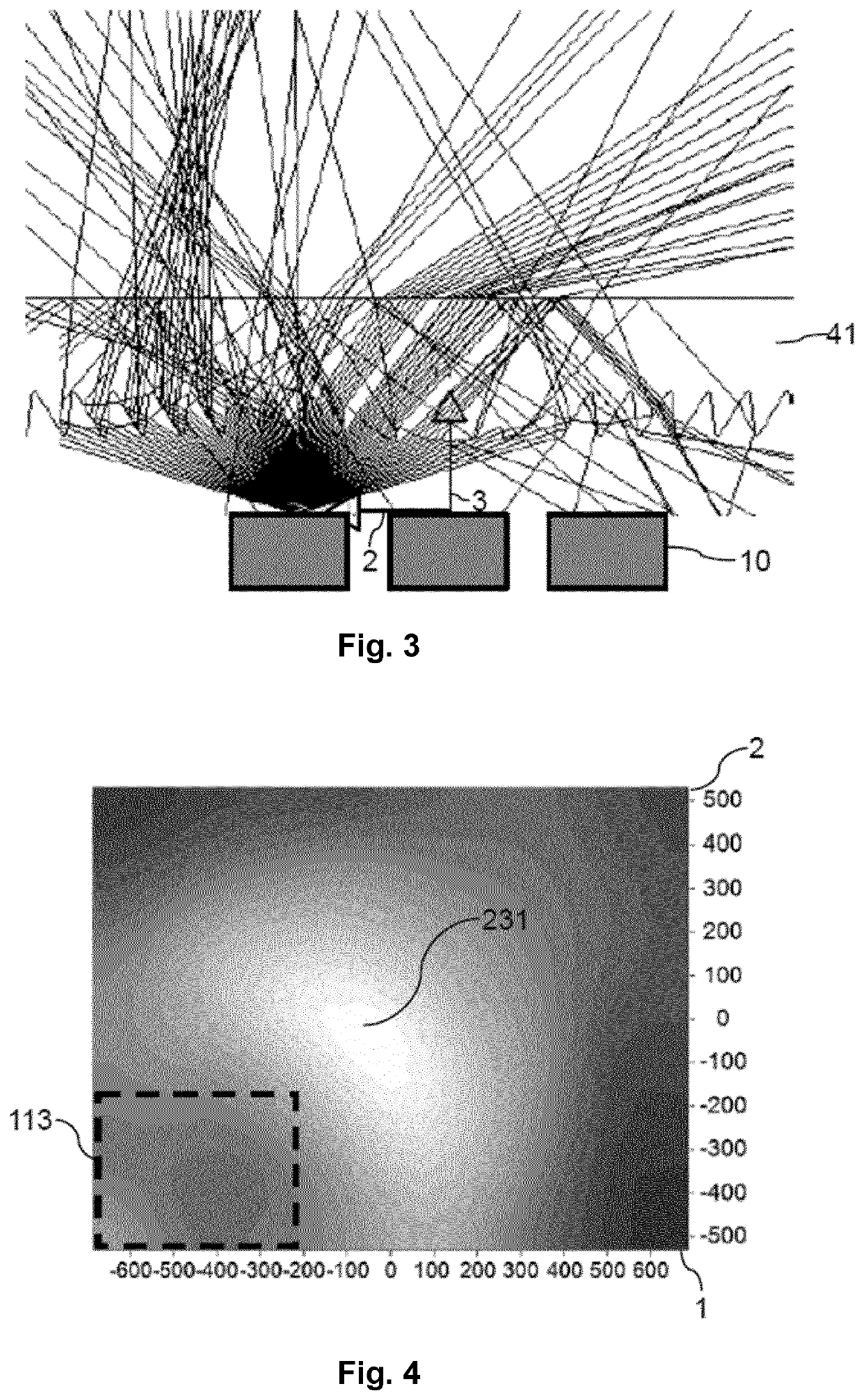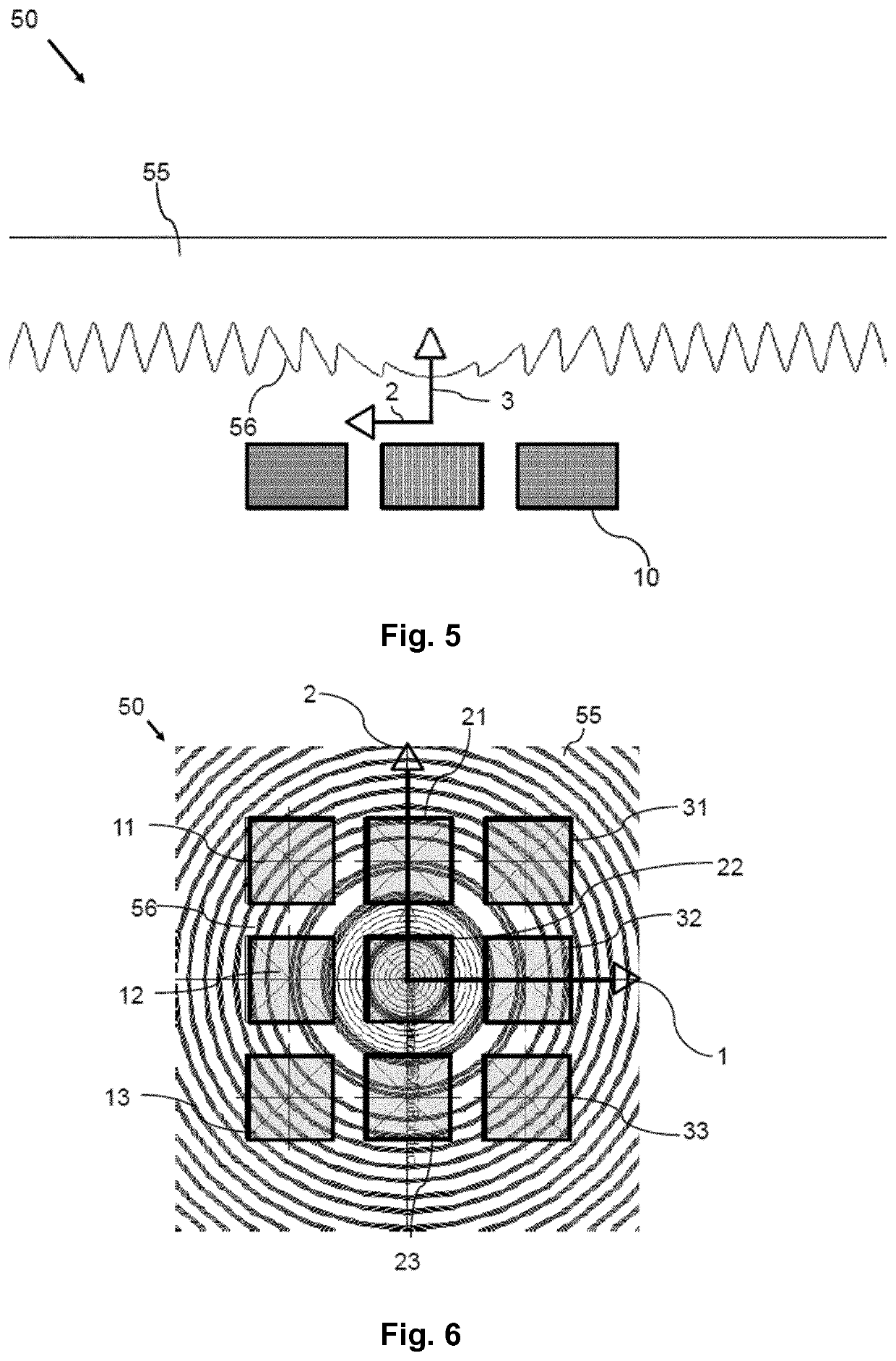Array with light emitting diodes and varying lens
a technology of light-emitting diodes and arrays, which is applied in the direction of instruments, lighting and heating apparatus, semiconductor devices for light sources, etc., can solve the problem that the use of space constraints is not generally acceptable for a large area, and achieve the effect of reducing the lateral area
- Summary
- Abstract
- Description
- Claims
- Application Information
AI Technical Summary
Benefits of technology
Problems solved by technology
Method used
Image
Examples
first embodiment
[0043]FIG. 5 shows a principal sketch of a cross-section of a LED array module 50. The general configuration is similar to the configuration discussed with respect to FIG. 1. The LED array module 50 comprises in this case a lens 55 which is a Fresnel type lens comprising a multitude of rotational symmetric sections 56 (see FIG. 6) arranged around an axis, wherein the axis is in this case identical with the z-axis 3. The sections shape or provide an uneven surface of the lens 55, wherein the uneven surface is in this embodiment arranged near to the LEDs 10. Each section 56 (besides of the center section) comprises an inner side surface arranged nearer to the axis and an outer side surface arranged farer from the axis. The inner side surface is joined with the outer side surface by a peak. The cross-section of the uneven surface therefore comprises saw tooth like structures. The orientation of the saw tooth with respect to the axis changes within a defined range from the axis in order...
second embodiment
[0049]FIG. 10 shows a principal sketch of a cross-section of the LED array module 50. The LED array module 50 comprises an array of 3×5 LEDs 10 wherein the cross-section is taken across the third row of the array of LEDs 10. The sections 56 are closed and elliptical in a top view (not shown) in order to enable a homogeneous light distribution in the reference plane and especially a homogeneous illumination of the intended scene. The inner side surface of the outer sections 56 (sections 5-14 counting from the middle or center of lens 55) are straight similar as discussed with respect to FIG. 5. The outer side surfaces of outer sections 56 are curved. The inner side surface, the peak and the outer side surface define a triangular cross section (connecting the endpoints of the inner side surface and the outer side surface away from the peak with a straight-line) in which the sum of the internal angles is bigger than 180°. The curvature may be adapted in accordance with the intended lig...
PUM
 Login to View More
Login to View More Abstract
Description
Claims
Application Information
 Login to View More
Login to View More - R&D
- Intellectual Property
- Life Sciences
- Materials
- Tech Scout
- Unparalleled Data Quality
- Higher Quality Content
- 60% Fewer Hallucinations
Browse by: Latest US Patents, China's latest patents, Technical Efficacy Thesaurus, Application Domain, Technology Topic, Popular Technical Reports.
© 2025 PatSnap. All rights reserved.Legal|Privacy policy|Modern Slavery Act Transparency Statement|Sitemap|About US| Contact US: help@patsnap.com



